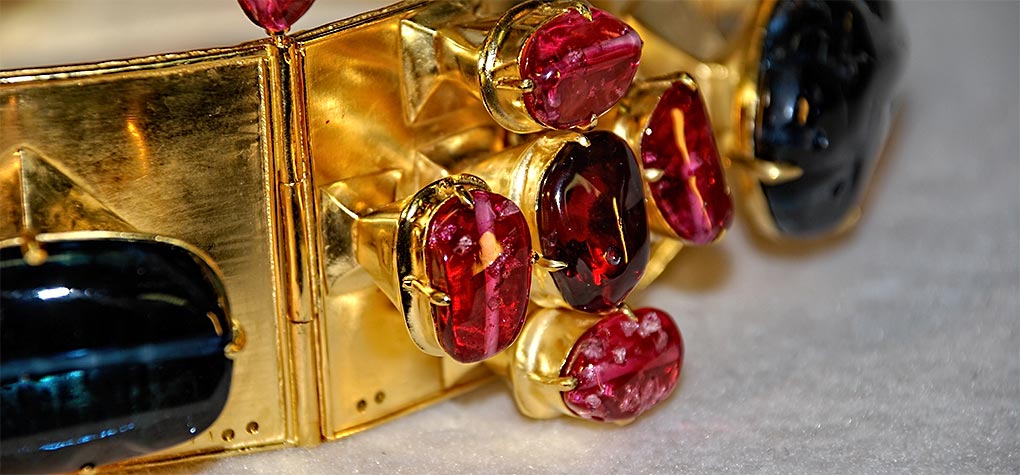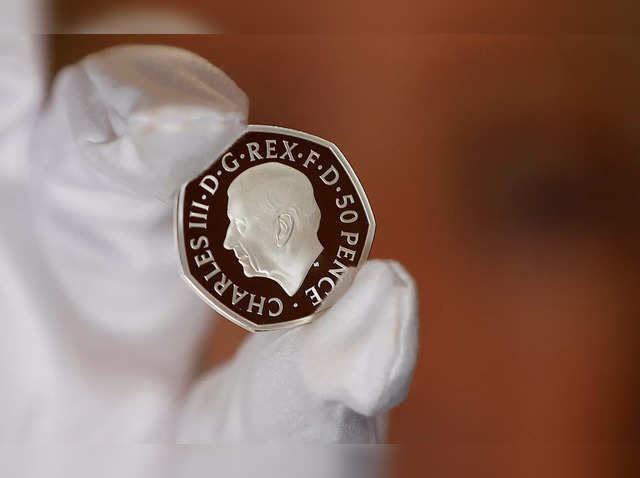Recommended Tips To Antique Finish Prague Mint Coins
Wiki Article
How Is The Plaster Model Converted Into A Digital 3d Model For Gold-Plated Coins Or Medals?
The process involves scanning a maquette in order to create a 3-D digital model of gold coins or medals. The equipment used is specially designed to record the specifics and dimensions of the model into a digital version. The digital copies are used for a variety of purposes during production.
3D Scanning - High-resolution scanners capture physical dimensions and the details of the plaster model. These scanners capture measurements and geometry by using a variety of methods, including laser scanning or the structure light.
Capturing Surface Data- The scanner releases laser or light beams on the surface of a plaster model. The scanner records the distortions and reflections these beams cause, taking in surface information.
Data Collection- When the scanner travels over the plaster model, it captures a vast amount of data points, creating an electronic representation of the model's shape, contours, and details.
Conversion to 3D Model- The collected data points are processed by special software that converts the data into a 3D digital model. This model mimics the physical dimensions and characteristics of the maquette.
The Motives for Creating an Digital 3D Model
Digital 3D Models allow precise reproduction of the physical model's details and dimensions. This ensures that the final gold medals and coins will match the design.
Digital models are able to be easily adjustment or refinement. Designers can adjust the 3D model without altering the original plaster maquette. This allows for repeated adjustments or enhancements.
Compatible with manufacturing processes- Digital 3D designs are compatible to various manufacturing technologies like CNC machining or 3D Printing, making it easier to create molds or dies for mass production.
Digital 3D models can be used to archive and document the design. Digital models can be saved for future use, reproductions or documents from the past.
By scanning and creating a 3D digital model of the model in plaster, manufacturers and designers can simplify the manufacturing process, ensure the accuracy and authenticity of replicating the original model. See the top rated Scanning and 3D Modeling Prague Mint gold medals website advice. including gold doubloons, gold bullion price today, gold doubloons, gold coins for sale near me, saint gaudens double eagle, gold and silver dealers, american eagle gold coin, purchasing gold bars, st gaudens double eagle, gold price coin today and more.

How Do Highly Skilled Engravers Increase The Beauty Of Gold Medals Or Coins?
The expertise of highly skilled engravers on the dies or hub is vital to enhancing and improving the design. Their skills allow them to add detailed details and perfect the design. Here's how they do this. Evaluation of Working Hub-
The engravers begin by looking at the die or hub which was made using the Janvier machine or the master hub. They assess the design's quality, precision and quality.
Correction of Imperfections
Engravers can correct any inconsistencies or imperfections within the transfered design. They may use precise tools to adjust depths or refine specific elements to ensure accuracy and consistency.
Enhancing Details
Utilizing specialized tools for engraving such as burins, gravers or pneumatic engraving machines, skilled engravers add elaborate detail to the design. They cut or carve into the surface of the hub to create intricate lines, textures, letters, or intricate patterns as required by the style.
Depth & Dimensional Enhancement
The engravers can manipulate the depths of design and shapes to give visual depth. This process involves changing the depth of cuts to highlight certain features and create an illusion of realism.
Texture & Finishing Accents
The visual attraction of an image may be improved by adding texture or finishing to certain areas. To achieve different surface textures techniques such as stippling, frosting or shading are used.
Quality Control and InspecQuality Control and Inspection
Engravers regularly check the final product to ensure it's accurate, clear, and stunning.
Collaboration and artistic interpretation
Engravers frequently work closely with artists or designers to understand the design in a precise manner. Their artistic ability and interpretation can enhance a design through subtle detailing or refining the design based on their artistic vision.
Their capability to manipulate metal with art and precision is what makes them so skilled. Their attention to detail and workmanship enhances the look and appeal of gold-plated coins or medals. Check out the top Prague Mint gold coin engravers blog info. including 2000 sacagawea, silver eagle coins, 1 10 oz gold eagle, cheerios sacagawea dollar, purchasing gold bars, chinese coins, gold bullion cost, ngc grading, sovereign british coin, $5 gold piece and more.

Why Is It Important To Hand Polish Dies For A Perfect Gold Coin Or Medal?
It is important to hand-polish dies in order to achieve a smooth and flawless surface. A smooth surface allows complex details to be more easily reproduced on the medals and coins.
The polished die ensures that the medals and coins made are sharp and have clear details, and a good relief. It increases the aesthetics and quality of the final product.
Reduced Wear and Tear - Polishing can reduce friction during the strike process. Smooth surfaces reduce the risk of errors or irregularities being induced on the coin or medal struck due to rough surfaces.
Consistency of Striking – Hand-polished dies ensure uniformity during the process of minting by ensuring an even striking area. It is important to maintain the precision, depth and quality of the design on multiple award or coins.
Die Longevity - Die that are polished well will be less prone to wear or injury during the striking process. They are also durable and more long-lasting and can strike more coins without sacrificing their quality.
Accuracy and precision- Hand-polishing gives the engraver the capability to refine and fine tune certain areas of the die. This ensures that the exact details of the medal or coin are accurately reproduced. This level contributes to precision in the final product.
Quality Control: Polishing is an important element of quality control. Hand polishing the die allows you to spot and fix any imperfections or inconsistencies prior to the process of striking.
Surface Finishing- Polishing gives specific textures and finishes that enhance visual appeal, or give unique qualities to medals and coins that are struck.
Overall, meticulous hand polishing of dies for gold coins and medals is an essential step in making sure that you get high-quality, accurately precise, and visually appealing produced products. This process is vital to the appearance, longevity and the consistency of the finished product. See the most popular hand polishing Prague Mint gold medals site advice. including gold medal swimming, 2000 p sacagawea dollar, gold 1 dollar coin, american eagle gold coin price, old silver coin, gold coin values, coin buy gold, golden and silver, 1 oz gold bars, gold 1 dollar coin and more.

Why And How Are Certain Gold-Plated Coins Or Medals Treated To Give Them A Worn Or Antique Look?
Gold coins and medals can undergo processes to produce an aged or antique look due to a variety of reasons, such as aesthetic preferences and historical significance or a desire by collectors. What exactly is done?
Chemical Patination. The metal or coin is treated with acid or solution to create patina. The solutions create an controlled oxidation and tone, giving the appearance of antique coins. This process can enhance details and add depth to the design.
Artificial Aging Mechanical or chemical methods are employed to mimic natural tarnish and wear. The use of abrasive tools or treatments may be used to create scratches, scuffs, or worn-out areas, which give the coin or medal an aged look.
Toning or staining The use of special solutions and heat treatments can be employed to tone or color the surface. This creates different hues of color. This can be similar to the discoloration and toning process that is natural over time.
Buffing and Polishing Techniques - Certain areas of your body are addressed with a selective buffing/polishing to eliminate highlights or surface layers, creating contrast to create an aged appearance.
Why should you create an antique appearance
Visual appeal- Some coin enthusiasts and collectors like coins with a vintage appearance. The worn-out appearance adds depth, character and uniqueness to the design, making it visually appealing.
The value of history or commemorative value Coins and medals that honor historical events or periods may undergo ageing to provide a sense authenticity from the past or to imitate coins from an era.
Coins and medals that are antique are sought-after by collectors who want exclusive pieces or limited editions. The age-related appearance can boost their collectible value and desirability.
Highlighting the Details - Aging can bring out the details in the design. By creating contrasts between raised and receded areas, design elements are more noticeable and apparent.
Artistry - Minting authorities and artists can employ techniques of aging to enhance the story telling, or symbolism.
Create an antique appearance to gold coins or other metals with a deliberate art selection. It can evoke memories of nostalgia, add interest to the eye, or even convey historical information. It is important to preserve the coin's authenticity and intrinsic value while preserving an aesthetic appearance. Check out the most popular antique finish of Prague Mint gold coins blog examples. including gold and silver dealers near me, 20 dollar coin, krugerrand coin, krugerrand gold coin, gold coin gold, gold coin dealers near me, 2000 gold dollar, 1 oz gold bars, 1 0z gold, gold price coin today and more.
